Contents
Raisins are an amazing product, indispensable for home experiments with alcohol, especially in winter, when there are no fruits suitable for winemaking, but you want to do something with your hands. Raisin wine is easy to prepare, it turns out to be relatively inexpensive and very tasty, original, not at all like grape wine – as they say, “with a twist”.
High-quality raisins ferment so well that they make a leaven used in the production of fruit and berry and even grape wines (we will talk about it below). Preparing wine from raisins at home is relatively simple – in fact, just like mash for Peisakhovka – Jewish raisin vodka, only after rapid fermentation the wine is not distilled, but aged for a couple of months at a low temperature. To reinsure and increase the degree, wine yeast is sometimes used – this is a more reliable option, but wines ferment perfectly on the “savages” – the main thing is to choose a good dried fruit that has not been treated with chemicals.
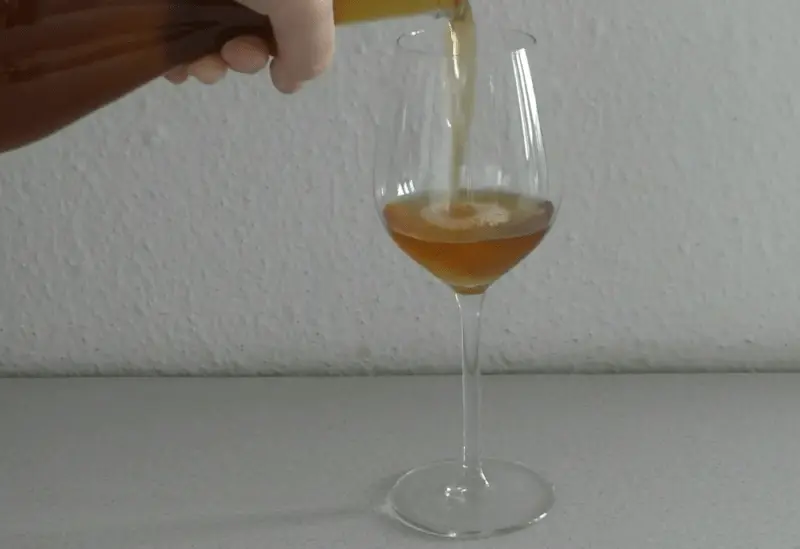
In fact, raisin wines are made not only by home-grown winemakers – there are a number of factory-made varieties of raisin wine in Europe. Even more often, the grapes are “undermined” before production – they are slightly dried either in special rooms or directly on the branches. So do, for example, Commandaria in Cyprus, Vinsanto in Tuscany or Tsimlyansk sparkling wine in the Kuban. Also, raisins are the simplest option for fertilizing wild yeast, for this purpose they are added to many slow-fermenting wines – for example, dandelion wine.
How to choose raisins for homemade wine?
The most important, I would even say the fundamental stage in the production of raisin wine is the choice of raw materials. The problem is that almost all dried fruits produced today are treated with sulfur dioxide to destroy a variety of microorganisms living on them, including wild yeast, which we need so much. In addition, some unscrupulous producers, instead of fumigating with sulfur, generally thump some indigestible chemicals into raisins, which not only have a terrible effect on the organoleptic properties and fermentation of wine, but can also be hazardous to health.

There are two exits:
- Buy homemade raisins from friends or trusted grandmothers on the market (or even cook it yourself, it’s not so difficult if you have suitable grapes and a dry attic);
- Acquire several varieties of raisins at once, little by little, make a separate starter from each, choose the product that gave the best results and continue to purchase exclusively this variety.
High-quality raisins ferment well and ferment actively, the wort will not have any foreign odors – hydrogen sulfide, chemical fragrances, etc., only a light leavened and, perhaps, a little alcoholic aroma. It is with such a trial starter that we, perhaps, will begin.
Raisin Wine Sourdough Recipe
As already mentioned, raisins for the fermentation of homemade wine are an indispensable product! It not only ferments well on its own, but also provides wild yeast with additional nutrients – nitrogenous and others, which has a beneficial effect on the work of any other yeast. To prepare the starter and – at the same time – choose the right raisins, we need warm water, sugar and 100 grams of dried fruit of each variety that you managed to find.
Never wash raisins! How to make yeast sourdough, if all the yeast contained on it simply “goes down the pipe”? Preparing the sourdough is as easy as shelling pears – we take liter jars, put one type of raisin into each raisin, top it up with warm (but not higher than 30 °) raw water, add one and a half tablespoons of sugar, cover the necks with gauze and send to a warm place for 3 days.
In 3 days everything will be clear. If the berries did not surface, no bubbles appeared in the jars, no sour smell is felt – such raisins are not suitable for sourdough or wine, only tinctures can be made from it – there are a couple of recipes in this article. If the wort fermented well, gave foam, movement is noticeable in the jar, then the sourdough was a success, and the raisins are good.
Now you should put on a rubber glove on the jar, keep it warm for another day – and the sourdough can be used to ferment any wine. You can store it in the refrigerator, closed with a regular lid, for a month, or even more. Before use, rearrange the jar in heat, add half a tablespoon of sugar – after a couple of days the yeast will play out again.
Classic raisin wine without sugar
Raisins, depending on the variety, contain up to 20% sugar, 12-13 degrees, normal for wine with wild yeast, properly prepared must ferment without any problems. Therefore, most often raisin wine is prepared at home without additional sugars. Also, raisin wine turns out to be quite economical, despite the fact that the dried fruit itself is not cheap. From one kilogram of raisins, you can get up to 4-5 liters of finished wine.
- raisins – 1 kg;
- water – 5 liters;
- raisin leaven – 0.5 liters.
Of the equipment you only need a meat grinder or blender.
 We sort out the raisins, getting rid of twigs and spoiled fruits. Pour two liters of warm (up to 30 degrees) not boiled water and leave for several hours – so that the berries swell properly.
We sort out the raisins, getting rid of twigs and spoiled fruits. Pour two liters of warm (up to 30 degrees) not boiled water and leave for several hours – so that the berries swell properly.- Grind the soaked raisins with a meat grinder, blender or in any other way, transfer to a fermentation container, fill it with the water in which the berries swelled, add the remaining 3 liters of clean water, leaven and put under gauze in a warm place for 2-3 days. The mass should occupy no more than ¾ of the volume of the bottle. Periodically, the fermenter must be shaken to bring down the foam cap.
- When the wort is fermented, a water seal or a glove with a hole should be put on the container. Fermentation will last from three weeks to two months – depending on temperature and other factors.
To increase the strength, and hence the stability of the wine, resistance to spoilage and various diseases, you can add a little sugar to it when the fermentation is attenuated, when you notice that the shutter began to gurgle less actively or the glove began to deflate. The procedure can be repeated 2-3 times.
- As soon as the fermentation completely stopped, the wort became lighter, a dense sediment fell to the bottom of the bottle – the liquid must be carefully drained through a straw. To save money, the pulp remaining in the bottle can be squeezed out well, the resulting liquid can be combined with the wort.
- It’s time for quiet fermentation. The wine needs to be poured into another bottle – so as to fill it by about 90%. A bottle under a water seal is sent to a dark, this time a cold place, for example, a dry cellar, a basement. There, the must will slowly ferment for another 2-3 months. When a dense yeast sediment falls at the bottom of the bottle, the liquid must be decanted through a straw, otherwise the wine will be bitter.
- After 3 months, when the drink has become absolutely transparent and no signs of fermentation are visible anymore, it must be bottled, sweetened to taste, or left dry.
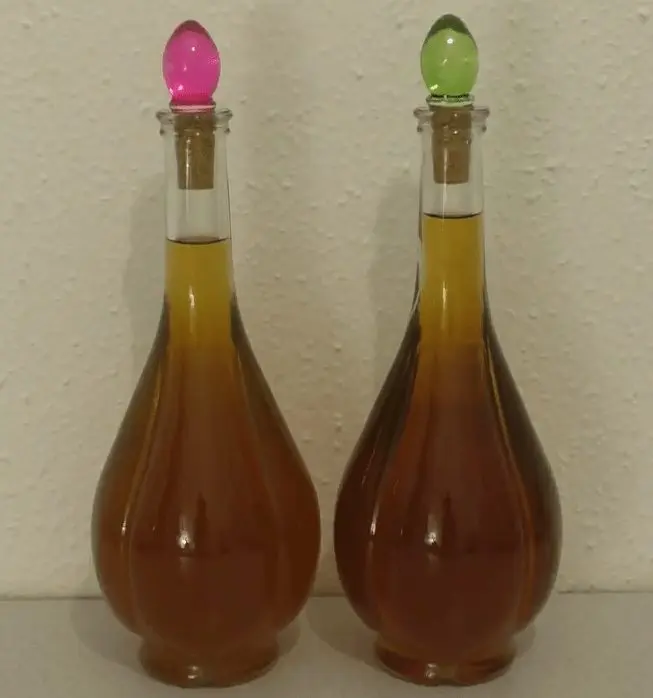
Aging raisin wines according to the recipe should be at least 5-6 months, in the same cellar, in a horizontal position. Your patience will be rewarded a hundredfold – over time, this drink gets much better, especially if you made it dessert or semi-sweet!
Raisin and rice wine
There is also a recipe. In fact, rice wine is almost sake, about which signor Gudimov wrote a cool article, read it. In this recipe, rice is still the main ingredient, there are fewer raisins, but you can play around with the proportions. The wine turns out to be very light, lighter than ordinary white, with a pleasant vermouth aroma, but at the same time quite strong, especially if you use purchased wine yeast. In such wine, the sediment exfoliates well and quickly, which greatly reduces labor costs and time of its production.
- rice (not steamed) – 1 kg;
- raisins – 500 g;
- sugar – 1.5 kg for dry wine, 2 – for dessert;
- citric acid – half a teaspoon;
- water – about 4 liters;
- raisin sourdough for wine – 0.5 liters or wine yeast – 4 g.
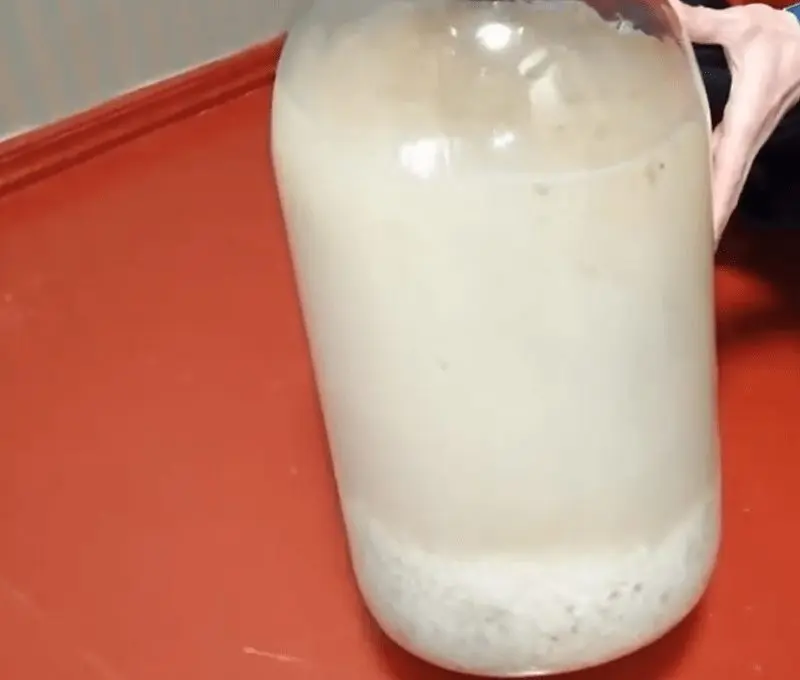
Preparation:
- Boil syrup from sugar, one and a half liters of water and citric acid. Cool down to 40 degrees.
- Transfer rice to a 3-liter jar and pour it with the resulting syrup. Wrap with a towel and leave for a day in a warm place to swell.
- After a day, transfer the rice along with the syrup to a suitable bottle. Add raisins, the rest of the water and yeast for wine or raisin sourdough previously fermented in warm water. Leave for a couple of days in a warm place, covering the neck with gauze. Shake occasionally to remove foam.
- After 2-3 days, active fermentation should begin. Now you should put on a glove or a water seal on the fermenter and wait – the process will be completed in 4-6 weeks.
- When the fermentation stopped, all the rice and raisins fell to the bottom of the jar, the liquid must be carefully drained through a tube, and the pulp must be squeezed out. Pour the wort into a new container at 4/5 volume, put the shutter back on.
- Secondary fermentation continues in a cool place until the wine becomes completely transparent. At this time, it will periodically need to be decanted – removed from the yeast sediment. Raisin and rice wine clears faster than regular raisin wine.
- In a month and a half, the young wine will be ready for bottling. You do not need to withstand it for a long time – 2-3 months will be enough.
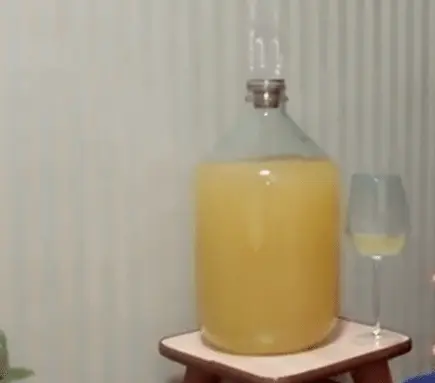
Polish dried fruit wine
A classic Polish homemade wine recipe made from raisins, dried apricots and black elderberry. If you have the ingredients, it is not difficult to cook it, the taste will be much brighter and more interesting than that of ordinary raisin wine, and the rich pink-red color will surely please aesthetes! Purchased yeast is used in this recipe – for rose or white wines, unfortunately, one cannot do without CKD. For 10 liters of wine you will need:
- raisins – 1 kg;
- dried apricots – 1 kg;
- dried black elderberry – 200 g;
- sugar – 1.2 kg (to obtain wine with a strength of 11-12%);
- water – 10 liters;
- yeast – according to the recipe on the package;
- yeast nutrition (optional).
Elderberry in this recipe is mainly used to color the wine in a beautiful pink color. In the article about black elderberry wines, we have already said that the seeds of this berry are poisonous. However, only 200 grams per 10 liters of must are used here – there is nothing to be afraid of. For reinsurance, seeds, of course, can be picked out. You can also replace the elderberry, for example, with dried blueberries, blackberries, or simply do without it.
Preparation:
- Wash raisins and dried apricots thoroughly under running water and finely chop or chop in any other convenient way. Dissolve sugar in hot water and let it cool. Dissolve yeast in warm water.
- Transfer dried fruits to a fermentation container, add elderberry, blueberries or blackberries, pour over syrup and add water so that the must occupies a maximum of ¾ of the volume. Pour in the yeast and mix well. Cover the neck of the bottle with gauze.
- Active fermentation will begin within a few hours. When it became clear that the wort is fermenting well, a water seal or at least a glove with a hole should be placed on the container.
- The primary fermentation will last from 5 to 15 days – CKD works faster than wild yeast. When the shutter stops bubbling and the wort clears up, it should be drained from the sediment, the pulp is thoroughly squeezed out and everything is poured into another, smaller container with a water seal.
- Secondary fermentation lasts from two to five months – until the wine becomes completely transparent, gets rid of turbidity. At this time, it must be drained from the sediment several times. Before bottling, you can sweeten it to taste, let it stand for a couple more weeks, and you’re done!
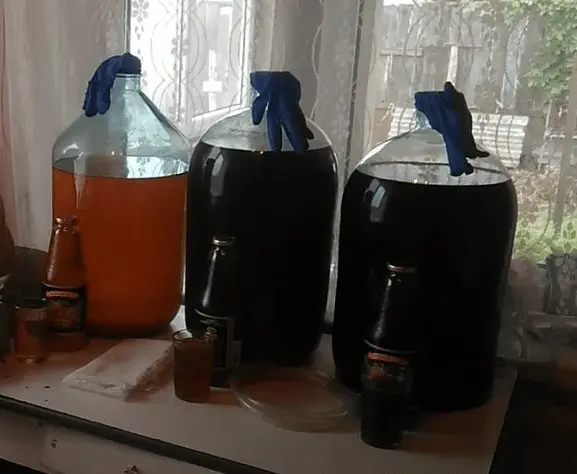
As we can see, raisin wines at home are not at all difficult. We wish you pleasant experiments and delicious results!










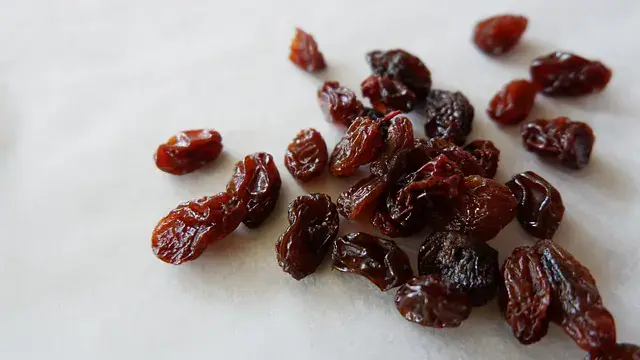
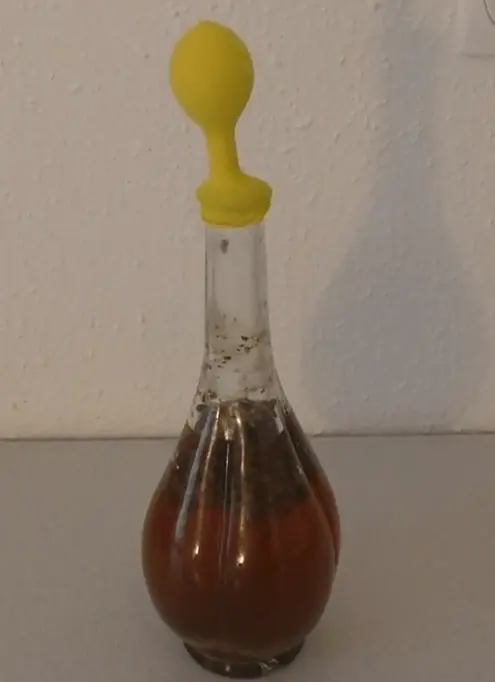 We sort out the raisins, getting rid of twigs and spoiled fruits. Pour two liters of warm (up to 30 degrees) not boiled water and leave for several hours – so that the berries swell properly.
We sort out the raisins, getting rid of twigs and spoiled fruits. Pour two liters of warm (up to 30 degrees) not boiled water and leave for several hours – so that the berries swell properly.